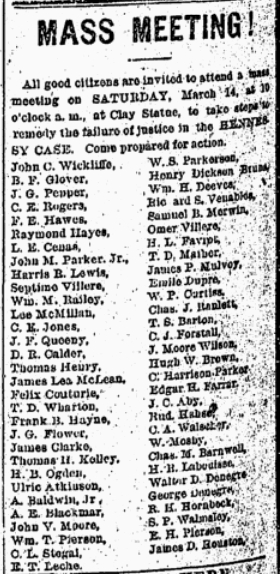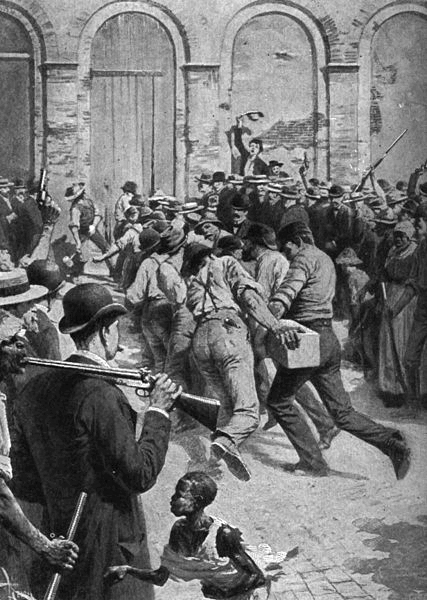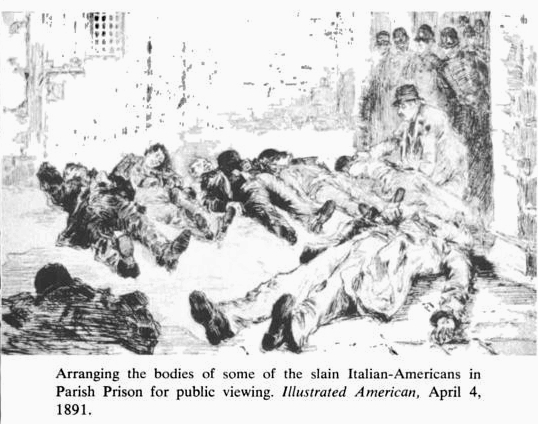|
Today in New Orleans History |
|
|
March 14



 

To receive an update for each day in New Orleans
history, join our facebook page
- Today in New Orleans History
William Jennings "Bill" Jefferson (born March 14, 1947) is a former American
politician from the U.S. state of Louisiana. He served as a member of the U.S. House of Representatives for nine terms from
1991 to 2009 as a member of the Democratic Party. He represented Louisiana's 2nd congressional district, which includes much
of the greater New Orleans area. He was Louisiana's first black congressman since the end of Reconstruction. On November
13, 2009, Jefferson was sentenced to thirteen years in federal prison for bribery after a corruption investigation, the longest
sentence ever handed down to a congressman for bribery or any other crime. He began serving that sentence in May 2012 at
a Federal Bureau of Prisons facility in Beaumont, Texas. Reputed New Orleans Mafia boss Charles/Carlos Matranga died on October 28, 1943 in Los Angeles of
natural causes. The Matranga crime family, established by Charles (1857-28 October 1943) and Antonio Matranga (Tony)
was one of the earliest recorded American Mafia crime families, operating in New Orleans during the late 19th century until
the beginning of Prohibition in 1920. Born in Sicily, Carlo and Antonio Matranga settled in New Orleans during the
1870s where they eventually opened a saloon and brothel. Using their business as a base of operations, the Matranga brothers
began establishing lucrative organized criminal activities including extortion and labor racketeering. Receiving tribute
payments from Italian laborers and dockworkers, as well as from the rival Provenzano crime family (who held a near monopoly
of commercial shipping from South American fruit shipments), they eventually began moving in on Provenzano fruit loading
operations intimidating the Provenzanos with threats of violence. Although the Provenzanos withdrew in favor of giving
the Matrangas a cut of waterfront racketeering, by the late 1880s, the two families eventually went to war over the grocery
and produce businesses held by the Provenzanos. As both sides began employing a large number of Sicilian mafiosi from their
native Monreale, Sicily, the violent gang war began attracting police attention, particularly from New Orleans police chief
David Hennessy who began investigating into the warring organizations. Within months of his investigation, Hennessy was
shot and killed by several unidentified attackers while walking home on the night of October 15, 1890. This was in keeping
with the Mafia practice of killing the government official who got in the Mafia's way. The murder of Hennessey created a
huge backlash from the city and, although Charles and several members of the Matrangas were arrested, they were eventually
tried and acquitted in February 1891 with Charles Matranga and a 14-year-old member acquitted midway through the trial as
well as four more who were eventually acquitted and three others released in hung juries. The decision caused strong protests
from residents, angered by the controversy surrounding the case (particularly in the face of incriminating evidence and
jury tampering), and the following month a lynch mob stormed the jail hanging 11 of the 17 Matranga members still waiting
to be brought to trial including Antonio Bagnetto, Bastiano Incardona, Antonio Marchese, Pietro Monastero and Manuel Politzi
on March 14, 1891. The Hennessey lynchings led to the American Mafia adopting a hard and fast rule that
policemen and other law enforcement officials were not to be harmed. Matranga was able to escape from the vigilante lynchings
and, upon returning to New Orleans, resumed his position as head of the New Orleans crime family eventually forcing the
declining Provenzanos out of New Orleans by the end of the decade. Matranga would rule over the New Orleans underworld until
shortly after Prohibition when he turned over leadership over to Sylvestro "Sam" Carollo in the early 1920s.
(According to http://en.wikipedia.org/wiki/New_Orleans_crime_family#Matranga_crime_family).
|
|
|

To receive an update for each day in New Orleans history,
join our facebook page - Today in New
Orleans History.
Analytics |

 William Parkerson (whose name appears at the top of the second column in the advertisement), head of the Bourbon political
machine, and several other members of the Committee of Fifty, responded to the verdicts by calling for a mass meeting at
the statue of Henry Clay. at Canal Street near the river.
William Parkerson (whose name appears at the top of the second column in the advertisement), head of the Bourbon political
machine, and several other members of the Committee of Fifty, responded to the verdicts by calling for a mass meeting at
the statue of Henry Clay. at Canal Street near the river.  The headline in The New York Times read, "Chief Hennessy avenged...Italian murderers shot down."
The headline in The New York Times read, "Chief Hennessy avenged...Italian murderers shot down."
